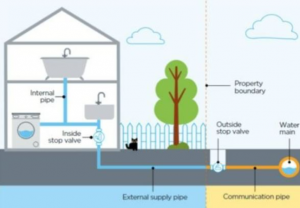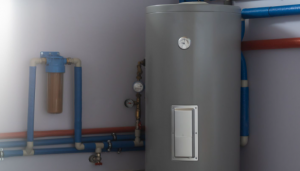Commercial plumbing systems differ from residential systems in several ways, most notably that they are more complex, larger, use more water, and require more maintenance.

There are a number of components of commercial plumbing systems. Six of these are outlined below.
1. Water supply and control
Commercial plumbing systems are connected to a main water supply source, which is usually a regional water line. The controls within the system include shut-off valves, water meters, and backflow prevention devices.
2. Water storage and heating
Commercial premises need a continuous and reliable supply of hot and cold water. They will often need large water storage tanks and/or boilers to enable this.

3. Fixtures and appliances
Commercial systems often incorporate a significant number of fixtures and appliances, including toilets, water fountains, dishwashers, sinks, and washing machines. These all need to be connected to the overall system/network.
4. Piping and distribution
Commercial plumbing systems often consist of a complex network of pipes that enable water to be supplied/directed to the various locations and appliances within the building(s). The pipes are usually made from copper, PVC or PEX, depending on which is most suitable for the application.
Copper pipe connectors
Connecting pipes is a vital part of ensuring a consistent flow of water throughout a plumbing system. Due to several factors, copper pipe connectors are one of the most popular types amongst professionals.
5. Drainage pipes
Commercial systems will usually have to deal with wastewater from multiple floor levels, such as sinks, toilets, and appliances. A network of drainage pipes is therefore needed.
6. Plumbing control systems
Plumbing systems, especially newer ones, will often include control systems that allow for the monitoring and regulation of water pressure, temperature, and flow rate. These systems boost efficiency and reduce waste.


